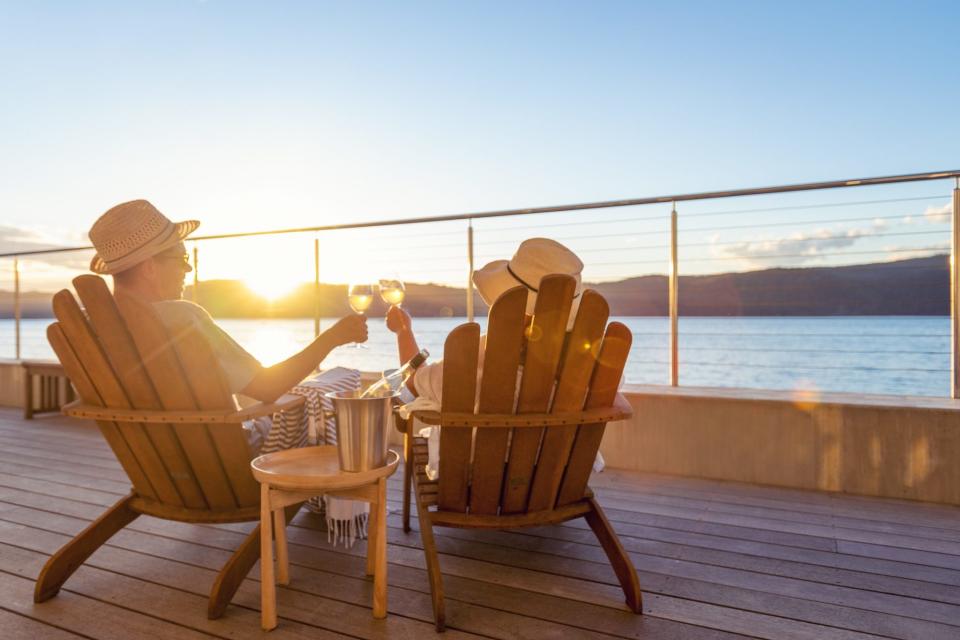Second homes are out of reach for most people, so this $1.5 billion startup invented a clever workaround—here’s how it works

Buying a house in today’s market can be tedious and wildly expensive—even for the wealthy who can afford to buy a second home. But Austin Allison, an entrepreneur who sold his real estate software company dotloop to Zillow in 2015, has figured out a way for people to buy a second home without the headaches associated with homebuying or managing a timeshare.
About 10 years ago, Allison and his wife were “very fortunate” to become second homeowners, he told Fortune in a recent interview. They lived in San Francisco at the time and purchased a home in Lake Tahoe. But by owning a second home, the couple realized they weren’t just buying a piece of real estate—they were buying a second community, a second group of friends, and “a second life, in many ways.”
“I wanted to find a way to make that dream possible for more people,” Allison said.
Reflecting on that idea for several years, Allison said “one of the light bulbs that went off” was the statistic that most second homes are only used about 10% of the time. That means, in return, there are many homes sitting vacant for long periods of time across the world.
“The whole idea behind Pacaso is about connecting these two problems and opportunities,” Allison said. “On the supply side, it's about making available what would have otherwise been empty second homes, to buyers or prospective buyers who are interested and aspire to find their happy place.”
In September 2021, Pacaso secured an additional $125 million in funding, bringing its valuation to $1.5 billion after just three years in existence.
How Pacaso works
While splitting time at a vacation home might sound an awful lot like a timeshare, Pacaso’s model is very different for a number of reasons. Most notably, Pacaso operates under a co-ownership model, meaning users actually own a fraction of the vacation home they use. Timeshares, on the other hand, are typically properties that are leased to multiple tenants.
“With Pacaso, you own a home,” Allison said. “With a timeshare, you're buying time, typically in a hotel. Owners who have purchased a Pacaso and then resold that Pacaso have benefited from about 10% appreciation on average, which is unique when compared to other vacation or travel alternatives.”
Pacaso users can own as little as one-eighth of a home and up to one-half of the value of the home. The most expensive listing Pacaso has sold on its platform was a home in Aspen for $2.5 million per share (or one-eighth of the home), but the range for most of its listings is between $200,000 and $500,000.
Isn’t it weird to co-own a home with strangers?
Unlike a timeshare, where the inhabitants are typically friends or family, Pacaso users could end up owning a property with complete strangers. But Pacaso’s platform has a couple of features that make it easier—and less weird—for co-owners to split time at the home.
Pacaso’s scheduling tool called SmartStay distributes the calendar fairly amid the ownership group, Allison said.
“So if you own one-eighth of a luxury Pacaso home, SmartStay will ensure that you get one-eighth of peak season, one-eighth of non-peak season, and one-eighth of the holidays,” Allison said. That typically works out to about five or six weeks of the year, but users aren’t capped at that amount of usage. If other owners in the home aren’t using their full allotment, other owners can use more than the one-eighth they own.
All Pacaso homes also feature large four-by-four-foot closets where co-owners can store their personal items while away from home.
“They're pretty large. You could fit quite a bit of luggage, skis, golf clubs,” Allison said. “You're not going to fit a car in the closet, but you are going to fit most things that you would want to have at your second home.”
Why wouldn’t someone just buy an entire vacation home?
Home prices and mortgage rates are considerably higher than they were just a few years ago, making it more difficult for first-time home buyers—and even people in the market for a second home—to afford one.
There are two main reasons why people choose co-ownership over the alternative of whole ownership Allison said. The first is cost savings.
"With a Pacaso home, you’re spending one-eighth of what you would spend to buy the whole home, which means you’re either saving money or you’re increasing your buying power to be able to afford more home than you would otherwise be able to afford on your own,” he said.
The other reason homebuyers choose Pacaso is because it’s the “easy button for homeownership,” Allison said.
“Owning a home is hard. Owning a second home is really hard. All the little details around maintenance, bill pay…it’s a lot of work,” he said. “With Pacaso, we handle all those details for you. You just get to show up at your home and enjoy it with none of the headaches that are customary of homeownership.”
This story was originally featured on Fortune.com

 Yahoo Finance
Yahoo Finance 